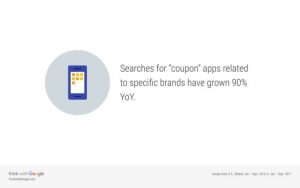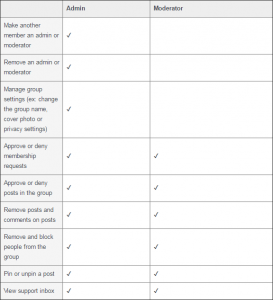In today’s hyperconnected world, communication cannot be observed in a vacuum. The rise of sophisticated mobile devices, fast internet connections, chat apps, video messaging tools, and project management platforms has revolutionized the way we interact with each other.
The benefits are obvious- the effective collaboration between teams, the real-time communication, secure data storage, and fast workload transmission have become mainstream. Not to mention that there are various tools that will help you stay on top of every aspect of your business management, from finances to project management.
The ever-rising IT innovations give us the opportunity to achieve a stellar workplace performance, but this is not always so.
Here is how much time your employees waste by each passing day.
They Spend more than Five Hours a Week on Personal Activities
Quickly responding to a friend request or posting a new photo from the office on Instagram take just a few seconds. But, even though those activities seem pretty harmless, they’re not.
Add up every tweet your post, every message you respond to, and every photo you share and you’ll see that you’re spending more than 42 minutes a day and 5 hours a week on the tasks that have nothing to do with your work.
These statistics were collected by the researchers behind the 2017 OfficeTeam’s survey, who analyzed more than 600 employees and office managers at the U.S. companies.
“If these numbers were true for every full-time worker in the US, that would add up to $ 15.5 billion in lost productivity every week due to professionals using their mobile devices for nonwork activities,” they emphasize.
A similar study was conducted by the U.K. by Rebootonline.com and the results are even scarier. The researchers came to a conclusion that Brits spend approximately 2 working hours and 2 minutes doing nothing, which is 10 hours and 10 minutes a week. According to their estimations, such personal activities during working hours may cost businesses £8,851.14 ($ 12,360) per employee annually.
What’s interesting about the study conducted by OfficeTeam is the fact that social networks aren’t labeled as a major time waster. Namely, 30% of the employees tested state that it is their personal mail that occupies them most.
Besides using their mobile devices to stay on top of their private mail, workers use them to access:
- social networks regularly (28%)
- sports sites (8%)
- mobile games (6%)
- ecommerce sites (5%)
- entertainment sites (3%)
How to inspire your employees to be more productive?
For many business owners, solving the problem of the lack of productivity in the workplace means fighting a Sisyphean battle. Many decide to go with the internet filtering and simply ban social media and entertainment sites. However, that’s not always a good idea, as these policies are extremely difficult to enforce.
Most importantly, they show the lack of your trust in your employees. Keep in mind that the 9-to-5 scheme isn’t enough for most of them to get their jobs done and that they work more than that. Sometimes, they will even give up on their weekends for your company. So, show that you respect that. Let them dedicate a few minutes a day to themselves until these activities start threatening their overall performance. Try to educate them and explain why it is important to stay focused during the office hours.
They Spend too much Time on Client Reporting
How do you tell your clients that the strategies you’ve implemented are working, even if they may not be able to see the results instantly?
With the help of client reports.
A comprehensive client report is the element bridging the gap between an agency’s strategy and their client’s expectations. It helps you earn your clients’ respect and boost their satisfaction. However, creating such a report is easier said than done. Each report you make needs to be based on the KPIs relevant to your clients and be full of up-to-date statistics.
It requires you to use numerous tools, keep track of all important metrics, monitor even the tiniest changes, collect data, and contextualize this data. Given all this, it’s not surprising that you’ll have to invest at least 5 hours a month on creating a quality report for a single client.
What’s the solution?
The only way to stay on top of this client reporting process is to automate it. Of course, there is no way to fully automate your reporting efforts, but there are numerous tools that will help you do so. Always go with a tool that:
- meets the needs of your industry
- allows you to monitor and analyze the KPIs relevant to your strategies
- is simple to customize and manage
- integrates well with other tools used in your niche
- meets your security policies
- enables you to create authentic, visually appealing reports
Work Emails Eat Up a lot of your Employees’ Time
Even though chat apps and project management tools are constantly rising, statistics tell us that we now send more emails than ever. According to the Radicati Group, the number of business and consumer emails sent by 2021 will jump to the astonishing 320 billion.
Some recent studies show that people spend roughly 4.1 hours checking their work email every day. This is 20.5 hours a week and 1000 hours a year.
The Carleton University researchers have come to the similar findings. They claim tha, each week, people spend 11.7 hours at work and 5.3 hours at home reading and sending emails.
What’s worse, most of these emails aren’t urgent. Still, both our clients and our coworkers expect us to answer them instantly, putting pressure on us to constantly check our inboxes.
What’s the problem with all this?
The answer is pretty obvious- it is a continuous distraction that can heavily impact the overall workplace productivity.
To prevent this from happening, you should first stop the CC and BBC craze. Most of the emails your employees receive are irrelevant to them. Still, they will probably spend a few seconds opening and reading them. So, think of a more effective strategy for your employees to check in with each other.
Also, choose a powerful email client such as Mozilla Thunderbird, Mailbird Lite, Hiri, etc. to make the process of sending, receiving, and organizing mountains of emails and accounts simpler to your employees.
Conclusions
Let’s face it. Your employees are wasting time on numerous activities, from socializing with their coworkers and being active on social networks to dedicating too much time to minor, less relevant tasks. To boost their performance, you should build a solid management strategy that will help you set some clear rules and mitigate all potential risks on time.
Still, don’t be too strict. Give them enough space to reenergize, provide them with the pleasant working environment, and most importantly, praise them publicly for outstanding performance.
Business & Finance Articles on Business 2 Community(39)



